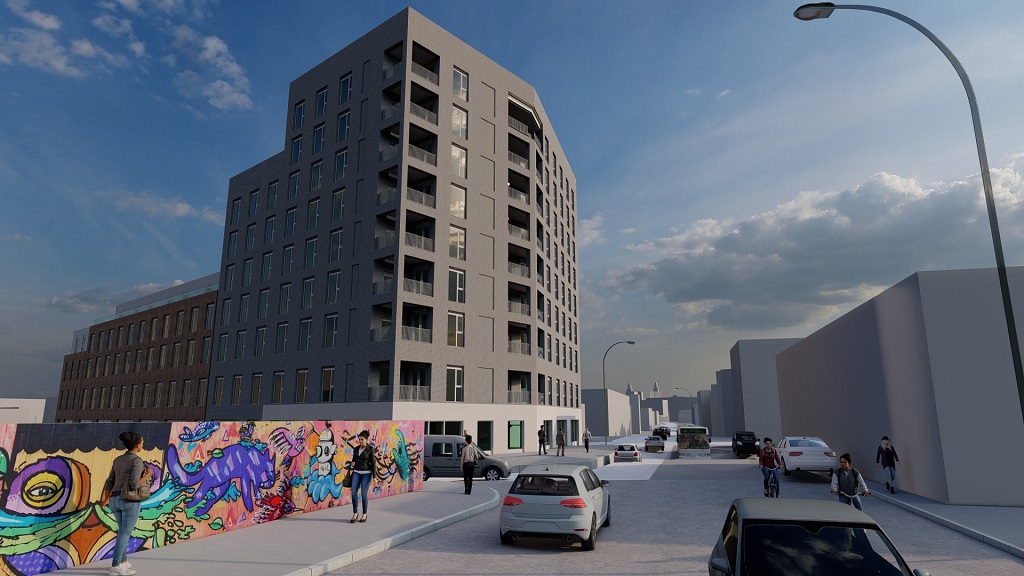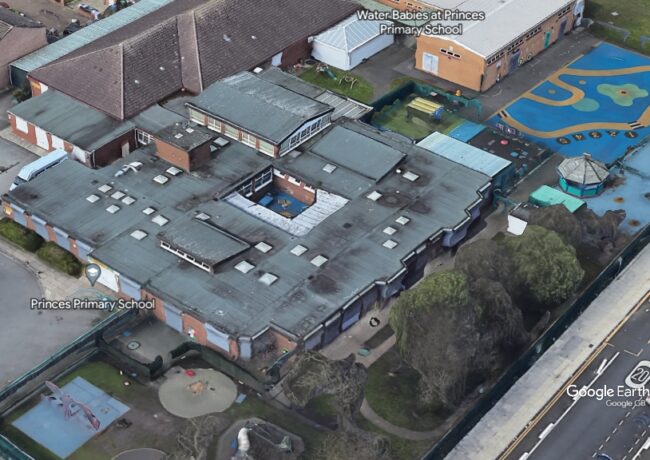Crosslane awaits outcome of Liverpool co-living appeal
The city council’s newly adopted policy on co-living is under the microscope as the planning inspectorate prepares to declare whether a refused 236-unit project should go ahead.
Liverpool City Council rejected Crosslane Co-Living Group’s plans for a development on New Bird Street in the Baltic Triangle in January, amid concerns about the size of the units and a lack of affordable housing. Crosslane then lodged an appeal in a bid to overturn the refusal.
In March, the city council adopted a planning policy that stipulated co-living developments will be viewed in the same way as other residential accommodation.
The authority’s stance means that projects must adhere to housing policies set out in the local plan, including minimum space standards. This approach presents an issue for co-living developers, who argue this residential model should be viewed differently from typical apartment schemes.
Co-living usually offers residents a private en-suite bedroom and kitchenette and places a greater focus on providing communal spaces, offering proportionally more shared areas than other residential buildings.
Co-living developers and Liverpool City Council have reached an impasse and the planning inspectorate’s decision on Crosslane’s scheme could prove instrumental in dictating if co-living has a future in the city.
If the planning inspector finds in favour of Crosslane, the decision could potentially undermine the city council’s policy and open the door for other similar developments in Liverpool.
If the inspector agrees with the city council’s stance, it is difficult to see a way forward for co-living in Liverpool.
Designed by Sadler Brown Group, Crosslane’s co-living scheme would have seen the redevelopment of the former Bogans Carpets showroom.
The development has been scaled back twice before, with the original plan calling for 370 co-living apartments across 11 storeys. It was then reduced to 326 before the current application, which petitioned for 236 units.
Liverpool City Council declined to comment and Crosslane was contacted for comment.





This is a classic case of an ideological standpoint over-ruling entirely suitable for temporary workers on medium-term stays; and (d) its density is entirely suited to a city-centre neighbourhood like Baltic. But never let common sense or what the market wants get in the way of the Command Economy, eh? “We’re Liverpool: we’ll tell you how you can live your life.”
By Sceptical
Once again this city council finds a way of deterring development via their mind-boggling local plan, Liverpool is not Venice nor is it a rural idyll, it`s a big city that should be getting bigger, and that is attractive to younger people and students who might end up staying. The Baltic Triangle is a go-ahead , left -field location ,it does not need houses with front and back gardens or big family flats so please let it evolve. No wonder activity has dried up there as the council are driving away the developers and this site is now a dump for cans and litter ,overgrown with weeds, let`s hope the inquiry backs this scheme.
By Anonymous
So much of the area undeveloped, underused wasteland. It seems thats what Liverpool council want for this city. No wonder jobs and investment go elsewhere.
By Anonymous
Normally I would agree with the above comments – there are solid reasons to justify LCC being viewed as anti-developer, overreaching, unqualified, ideologues. However, have any of the commenters actually looked at the plans for this scheme? The design is terrible.
It’s not just about the flawed Local Plan Policy on the mix of apartments and whether co-living should be supported in principle – the plans are contrary to the Baltic Spatial Regeneration Framework, which was widely supported by the residents and businesses of the Baltic Triangle Area.
Co-living? Sure. Building of scale? Sure. This building, with these floor plans? No. We can and must demand better.
By Anonymous
The comments below this story tell their own, as they have beneath multiple Liverpool stories in the last eighteen months. The council is anti-development, lacks vision and imagination, and is hide-bound by its poor politics. The result? A dearth of construction activity in the city and a shrinking professional supply chain. What a shower.
By Buyer Beware
Liverpool needs filling with this stuff
By Anonymous
@ Anon 5.04pm, people have choices and they have more choices if the market is allowed to prevail, you say these flats are too small ,if so the renters will reject them and go elsewhere,but where do they go? where can they go when the council is anti building of high-rise, they don`t seem to accept that developers need to make some profit,
By Anonymous
To be fair these do look truly awful. A waste of a good balcony if you ask me.
By Anonymous
Co-living is just a gimmicky marketing term. A hybrid between student living and standard apartments. It’s not innovative and it’s nots clever to make apartment sizes small. Liverpool land value is cheap. Invest in getting people to stay in the city and grow the city by offering higher standard of accomodation and high spec urban investment=higher gva or higher economic growth
By Anonymous
As the Guardian commented when the commissioners first arrived in the city, Liverpool is in thrall to property developers; and this project sums things up: low-quality, high density, high rise, high price, high profits. It adds nothing to the architectural landscape and offers little short of imprisonment for those foolish enough to purchase or rent one of these tiny flats.
By Dave Downey
So if Liverpool is “in thrall” to property developers we should be seeing planning applications flying in left right and centre, the truth is property developers are steering clear of Liverpool. Virtually nothing is planned at the Baltic, Pall Mall office site is idle, Moorfields is still a vacant plot, and the waterfront has nothing of real note planned.
The council must be the worst run and most unimaginative in the UK, it sees developers as the enemy who must be treated with suspicion because they`re trying to make a profit, Liverpool will never prosper without by shunning market forces.
By Anonymous
This site needs developing as does the wider area, and with good high quality architecture that provides decent spacious homes with good sized balconies to help make this neighbourhood more long term and a place people want to stay in. There is space for good sized townhouses on the periphery along Park Road and Sefton Street. However co-living looks like a cheap veneer for rubbish slum housing which only benefits the investor, therefore this shouldn’t go head.
By BuildItNow
If the drawings look bad, you know they will look even worse once they’re built.
By Anonymous
Cheap and grim looking. I know the area needs investment but better than this please.
By Anonymous
A lot of hysteria on here criticising this development re ” grim and awful” but most of the buildings in the Baltic appear like this, and why? Because Liverpool City Council insist on this faux warehouse look .
LCC have developers running round in circles eg Romal at Central Docks, and though this building is not perfect , I would easily prefer it to the current bombsite which no one else seems interested in.
By Anonymous
Get it built.
By Michael McDonut